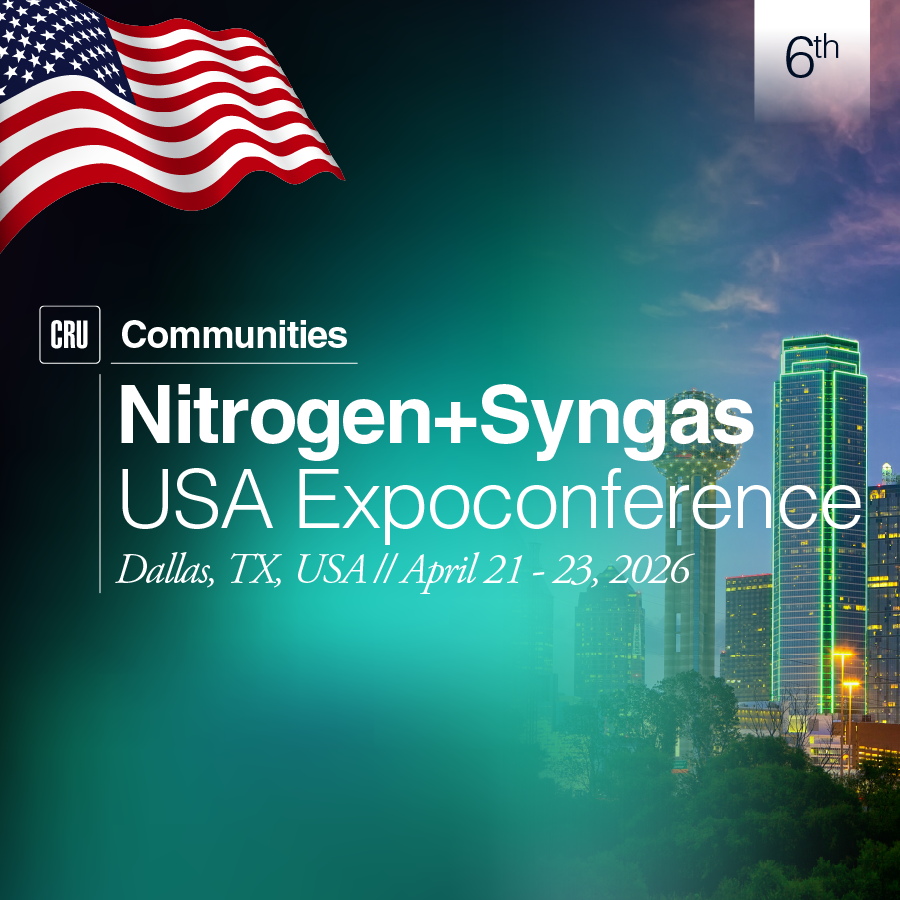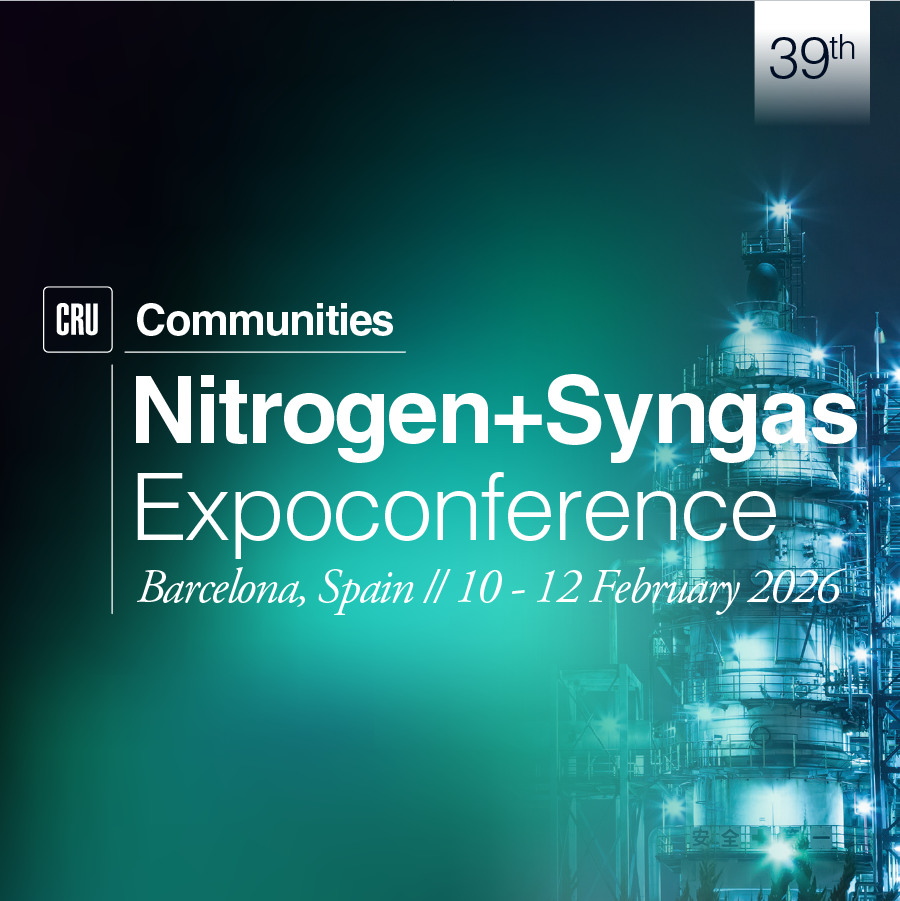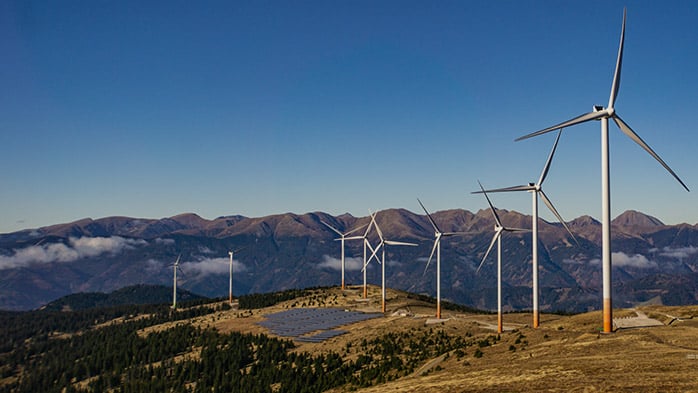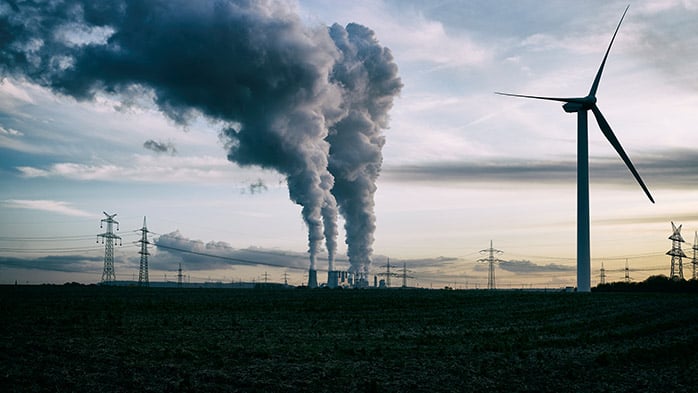The need for low-emissions hydrogen and ammonia is expected to accelerate as decarbonisation quickens over the coming decades. Both will play a significant role in decarbonising hard-to-abate sectors including steel, shipping, aviation and fertilizers, and within the wider energy transition generally. Yet uptake across other sectors has a mixed outlook, constrained by the cost and technical challenges of switching to hydrogen or ammonia, and the existence of alternative decarbonisation solutions.
This Insight covers some of the key opportunities and challenges of this emerging market, using analysis from CRU’s new Low-Emissions Hydrogen and Ammonia Market Outlook.
Hydrogen and ammonia have a role in the energy transition – but are not suited to every sector
In the face of escalating climate change concerns, the imperative to transition away from fossil fuels to sustainable energy sources has become an unprecedented global challenge. The adverse impacts of greenhouse gas emissions, primarily attributed to the burning of fossil fuels, have propelled the international community to seek alternative solutions that are both ecologically responsible and economically viable.
Against this backdrop, low-emissions hydrogen, and its derivative ammonia, have emerged as promising energy carriers with the potential to play a pivotal role in the ongoing energy transition. As shown below, detailed analysis conducted by CRU projects low-emissions hydrogen and ammonia demand to reach ~160 Mt and ~230 Mt in 2050, respectively.
Traditional hydrogen end-uses, including methanol and ammonia production, the latter of which is driven primarily by fertilizer demand, will be major sources of consumption, as decarbonisation drives a switch to less emission-intensive production technologies.
Refining will undergo a similar transformation, although against a backdrop of declining overall consumption as the share of hydrocarbons in the energy mix declines. Adoption of hydrogen and ammonia in hard-to-abate sectors, such as aviation, shipping and the manufacture of steel, will also generate considerable demand, although many of the technologies needed for their uptake are still in the development phase – with proven commercial viability yet to be demonstrated.
We see less potential for uptake in other sectors, including transport and power generation, where alternative decarbonisation solutions already exist and are proven to be more competitive. Switching to hydrogen or ammonia will incur high infrastructure costs; and the low density of hydrogen has direct implications for equipment used. Meanwhile, ammonia also poses challenges to its adoption:
- Ammonia is toxic and will cause major harm to humans and the environment if spilled
- Infrastructure for ammonia trade is highly specialised and would need to be expanded significantly
- Ammonia ‘cracking’ to generate hydrogen results in a 15% hydrogen yield loss
- Ammonia, while carbon-free, is a high-nitrogen fuel that almost certainly will lead to emissions of nitrous oxide (N2O) which is itself a powerful greenhouse gas. Suitable abatement technologies, alongside sufficient regulation, will therefore be needed to mitigate these emissions.
Green hydrogen at <$1.0 /kg will not be achievable as some suggest
Hydrogen production costs are dependent on the technology deployed, the energy source and other local cost factors. Carbon prices are another important consideration for overall competitiveness. Unabated fossil-based hydrogen was (before the global energy crisis at least) the most economically viable option, with costs of <$2.0 /kgH2 according to CRU’s Hydrogen Cost Model.
Carbon capture, utilisation and storage (CCUS) adds cost to fossil-based hydrogen production as the CCUS requires additional investment and is energy intensive, but the added cost of carbon capture is only ~$0.4–0.5 /kgH2 in an SMR plant. This is because fossil-based hydrogen production processes already incorporate carbon capture, which is a necessary part of the process to produce a pure hydrogen gas stream. Finally, hydrogen produced via electrolysis with low-emission electricity, assuming full costs of electricity are borne, is upwards of $5–6 /kgH2.
Desk research will quickly identify a number of 3rd third party forecasts suggesting that the levelised cost of hydrogen (LCOH) will fall below $2.0 /kgH2 by 2030, and $1.0 /kgH2 by 2050 – perhaps under optimistic scenarios and in regions with high capacity factors of renewable electricity. As seen in the graph above, we do not subscribe to this view.
Utilising our own cost assumptions for renewable energy and electrolysers, most countries are still expected to exhibit green hydrogen costs above blue and grey costs by2050, ranging between ~$3–7 /kg in real terms – even before the addition of necessary storage and distribution costs. Green ammonia costs also follow the same trajectory, with the cost of green hydrogen forming the largest part of its overall cost structure.
Furthermore, as ammonia production requires a constant supply of hydrogen, additional costs associated with overcoming this challenge – if relying on the underlying intermittency of renewable energy – can also be presumed.
The conclusion is that aside from those countries that are expected to have access to low-cost renewable energy, green hydrogen and ammonia costs will still be prohibitively high by 2050, with implementation of subsidy or a carbon price likely needed for the industry to develop.
Projects stall as offtake agreements remain elusive and market approaches its ‘messy middle’
While both low-emissions hydrogen and ammonia have emerged as promising energy carriers, with the potential to play a pivotal role in the ongoing energy transition, it is essential to approach the role of hydrogen and ammonia with a realistic lens, acknowledging both their promises and challenges, particularly cost.
The pathway to a hydrogen-based economy will require not only technological advancements but also infrastructural investments and systemic changes. In many sectors, this will offset the value that hydrogen or ammonia can deliver, with alternative decarbonisation solutions instead being adopted.
This latter point is reflected most tangibly within the low-emissions project pipeline itself, where just 2% and 4% of hydrogen and ammonia projects have reached a final investment decision, respectively.
The missing key for project financing remains the committed offtake, with potential end-users still unconvinced by the lack of policy clarity, high costs and infrastructure requirements of adopting hydrogen or ammonia.
We believe there needs to be more focus on potential demand in existing markets such as steel, fertilizer and methanol for faster development and for the industry to move beyond its ‘messy middle’.
Interested in the future of hydrogen and ammonia? CRU’s Low-Emissions Hydrogen and Ammonia Service can validate and test your internal assumptions and support business decisions. If you are not already a subscriber, please speak with your CRU account manager.

















